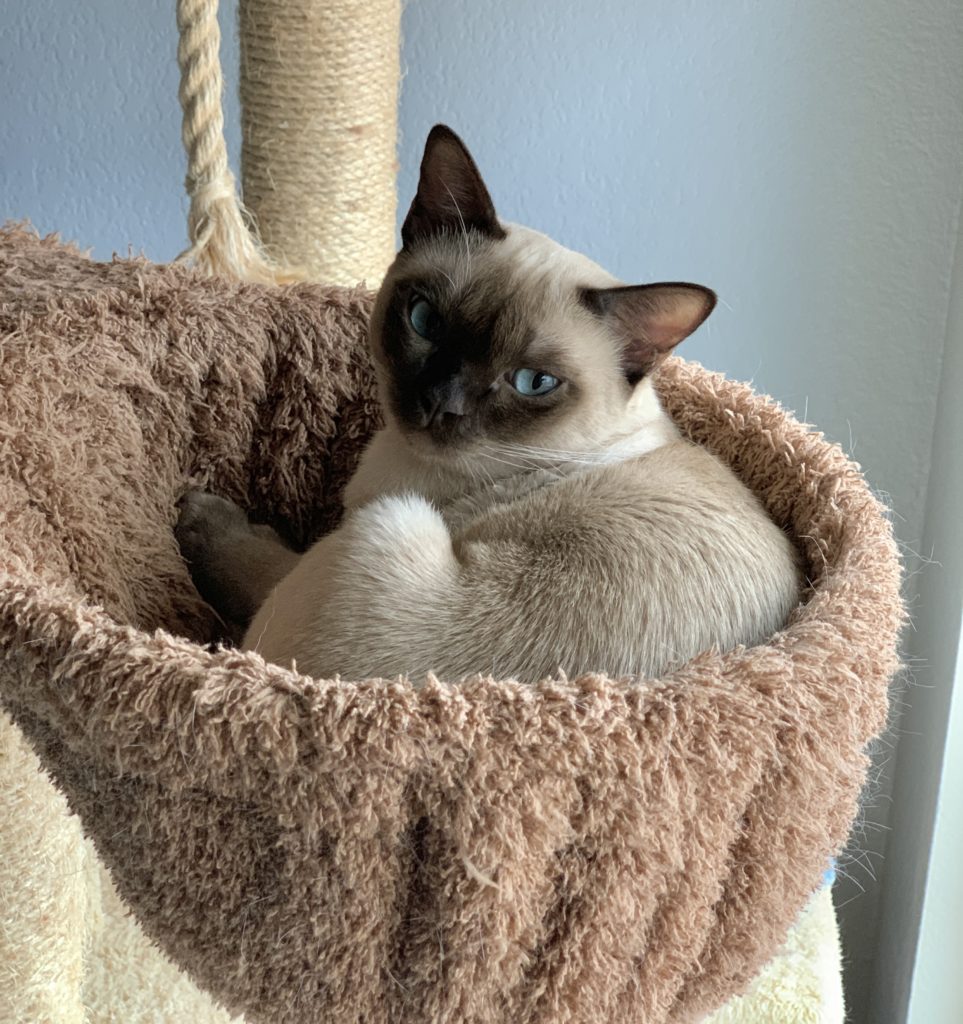How Much Protein Does Your Cat Need?

When was the last time you took a good look at your cat’s body shape? Does she look a little pudgy? Underweight? Or just right? Because cats are carnivores they require animal protein in their diet. But how much protein exactly is needed? The answer varies due to body weight.
I haven’t ever really given much thought to how much food to feed by cats because they are not overweight or underweight. Their body shapes have always been fine. That is, until my almost one year old cats started to look a little chunky. 😳 (They are highly food motivated!)
Minimum protein requirements
I recently learned about a really cool tool to help calculate the minimum protein requirements for pets. It was designed by renown pet food formulator and expert Steve Brown. Because we are busy pet parents and not pet nutritionists, we rarely think about the recipes and formulations we are feeding our cats. We simply leave it up to the brands we entrust to feed and assume that everything on the label must be true and balanced.
Unfortunately, this may not always be the case. Despite best intentions, some formulations may have errors or other miscalculations. Or their feeding instructions are inappropriate. As a result, our cats may not be getting the proper, required nutrition for them to be their healthiest.
Protein calculator tool
Because of this Steve Brown designed on online calculator to help you determine the minimum protein requirements for your pet, and it lives on the Truth About Pet Food website. Here’s what you will need before you get started:
- Your pet’s ideal weight
- The Guaranteed Analysis on the package
- Find the % protein of the recipe on the analysis
- Look for the kcal/kg or kcal/lb on the package
- Find the number of kcal per ounce/can, etc.
The calculator will use your pet’s weight to determine how many grams of protein your pet needs daily. Next, it will find how many calories (kcal) this translates into. You can then determine by the minimum number of calories needed how much to feed. Every product label will show the number of kcal in each ounce of food (or per can, etc). Remember, this is the MINIMUM protein requirement.
What about feeding instructions?
According to what I’ve learned from Steve Brown’s interviews, following feeding instructions on the product may not provide enough protein. In other cases, it may end up being excessive. From a caloric intake perspective, if I had followed some labels I’ve read in the past years my 10 pound cats would have eaten up to 12 ounces of food (more than 3 large cans) per day! This would be way too many calories, and my cats would be obese! Or I would have wasted lots of food because they didn’t eat it all. It really depends on how food motivated your cat is.
Why is all this important to know? Because having solid information about how much protein your cat should be getting daily can help you avoid over-feeding (like my almost one year olds). It can also help you save money, and get a grasp on how much you really need to be feeding everyday.
Specificity helps streamline diets
While some cats have a more active lifestyle, especially kittens and younger cats, less active and more sedentary cats’ dietary needs will vary. However, when you are able to use their ideal weight to determine the minimum number of protein grams and then the number of calories needed of that food, you can simply streamline their diets.
Finally, I highly recommend you hop on over to the Protein Calculator and start plugging in some numbers. At the very least it will be very eye opening and the results may surprise you!

